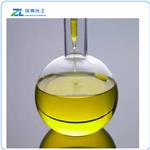Description
Ricinoleic acid is an unsaturated omega-9 fatty acid and is an important component of the seed oil obtained from mature castor plants seeds. The compound is produced for industries by fractional distillation or saponification of hydrolysed castor oil. It is normally used in manufacturing personal care products such as deodorants. Much of ricinoleic acid characteristics and effects can be associated with castor oil.
Chemical Properties
Colorless to yellow, viscous liquid.Soluble in
most organic solvents; insoluble in water. Com-
bustible.
Chemical Properties
Ricinoleic acid (synonym castor oil fatty acid) is an unsaturated fatty acid prepared from castor oil. When Ricinoleic acid is pyrolyzed (heated in the absence of air), it breaks down in undecylenic acid and n-heptaldehyde.
appearance yellowish, clear, viscous liquid
specific gravity (at 25°C) 0.938 - 0.944
refractive index (at 25°C) 1.4695 - 1.4700
acid value mg KOH/g min.175
iodine value 82 - 90
saponification value mg KOH/g 180 - 190
hydroxyl value 150 - 160
unsaponifiable matter max. 1
colour Gardner max. 7
Uses
- soaps: Ricinoleic acid can be reacted with various bases (caustic, ammonia, ethanolamines, etc.) to produce soaps having the desired characteristics (solubility, physical characteristics, polarity, etc.) depending on the final application. Some of them are: cutting oils, industrial lubricants, emulsifiers and metal working fluids. Transparent bar soaps & high solids liquids soaps are made possible by using Ricinoleic acid. The same for industrial germicides, disinfectants and heavy duty detergents (solubilization of phenolic and cresylic bodies).
- surface coating: it is used as an efficient pigment/dye dispersants in inks, coatings, plastics, cosmetics, etc.
- textiles: Ricinoleic acid provides polarity, surface wetting and lubricity.
- rubber: the sodium/potassium soaps of Ricinoleic acid are emulsifiers and foam stabilizers.
- vinyl polymers: it's sodium soap is useful as emulsifier, stabilizer and defoamer for emulsion polymerization of resins such as PVC & PVAc
- food additives: it's used in the production of PGPR (polyglycerol polyricinoleate) for use in chocolate.
Uses
Ricinolic Acid is a metabolite of linoleic acid from Lactobacilli and has antifungal activity in bread. Ricinolic Acid is also a metabolite of castor oil and has shown to activate intestinal and uterine smooth-muscle cells through EP3 prostanoid receptors inducing diarrhea and labor in pregnant females.
Uses
Soaps, Turkey red oil, textile finishing, source
of sebacic acid and heptanol, ricinoleate salts, 12-
hydroxystearic acid.
Definition
ChEBI: Ricinoleic acid is a (9Z)-12-hydroxyoctadec-9-enoic acid in which the 12-hydroxy group has R-configuration. It is a conjugate acid of a ricinoleate. It is a C18 unsaturated fatty acid that comprises 80% of the fatty acid content of castor oil.
Carcinogenicity
Four rabbits given intermittent
subcutaneous injections of 3120 mg/kg ricinoleic acid for
52 weeks developed subcutaneous neoplasms. The
tumorigenic potential of ricinoleic acid injected intravaginally
in groups of 20 mice was also studied. No tumors
attributable to ricinoleic acid treatment were observed in
three studies after 18–20 months.
Purification Methods
Purify it as the methyl acetylricinoleate [Rider J Am Chem Soc 53 4130 1931], fractionally distilling it at 180-185o/0.3mm, then 87g of this ester is hydrolysed by refluxing with KOH (56g), water (25mL), and MeOH (250mL) for 10minutes. The free acid is separated on acidification and extracted into Et2O, dried (Na2SO4), filtered, evaporated and the residue is crystallised from acetone at -50o, and distilled in small batches, b 180o/0.005mm. The R-enantiomer has m +5.5o, b 245o/10mm and [] 26D +7.2o (c 5, Me2CO). [Bailey et al. J Chem Soc 3027 1957, Beilstein 3 IV 1026, 1207.]





